2024: The Year of Rate Cuts, but How Much and How Soon?
For 2024, we are expressing our outlook as two parts as we see the first and second halves of the year progressing differently. In the first half of the year, we are expecting central banks in both Canada and the U.S. to maintain their policy interest rates at current levels. As the previously aggressive hiking cycles put increasing pressure on consumer and business spending, we see both countries entering mild recessions, with contracting GDPs, slightly increasing unemployment rates, and pressure on corporate earnings.
By the middle of 2024, we expect inflation rates to have declined sufficiently to allow central banks to begin reducing interest rates through the latter half of the year, and continuing into 2025, before we see rates stabilize, but at a level higher than was typical before the pandemic. Through the latter half of 2024, although inflation will still not yet be down to the 2% targets, we expect that concerns of a resurgence of inflation will be reduced, and although corporate earnings will likely still be under pressure, we would expect investors to start looking beyond the recessions towards growth in 2025. As such, we see 2024 as a slightly positive environment for equities, but perhaps more so through the latter half of the year.
Key Takeaways:
- 1H24: The onset of recession – Through the first half of the year we expect pressure on corporate earnings as central banks hold policy rates at current levels to ensure that inflation continues its downward trajectory towards the 2% target levels. As consumer spending slows and corporate earnings are pressured, investors will likely favour more defensive sectors.
- 2H24: The rate cuts – As we enter the second half of 2024, we expect the focus to be on the decline of policy rates as bankers see enough disinflation momentum to ease off their restrictive policies as the economies slow and unemployment rates rise. Economists will be watching for the bottoming of the economy, and investors will be counting on the start of a new business cycle and start bidding up valuations even as corporate earnings bottom out.
- Stay Invested - Timing market tops and bottoms is exceedingly difficult, and markets can react quickly at, or ahead of, the first signs of an improving economy. Staying invested in the right assets for your long-term objectives and risk tolerance is usually the most prudent approach.
- Opportunities in Fixed Income - The high interest rate environment has created opportunities in fixed income markets that we haven’t seen in decades in both the U.S. and Canada. Fixed income investors are poised for a dual benefit. Not only are yields now more comparable to broader equity returns, but rate cuts could provide gains as bond prices appreciate. Extending duration may benefit investors this year.
- Equity Positioning - When excluding the mega-cap tech stocks that have driven index performance in the U.S., returns have been more muted, yet volatile. We would favour the U.S. over Canada. We also continue to favour balanced portfolio positioning, given our base case of mild recessions in the first half of 2024, shifting to more cyclical sectors in the second half of the year.
Source: The Raymond James PCS Strategy Team.
Read the full report here (downloadable PDF)
Your unique circumstances and risk tolerance are key factors in the ongoing management of your portfolio.
To discuss how this or other financial opinions may affect your investments please contact me.
Sincerely,
Marc

